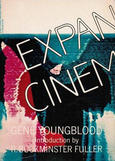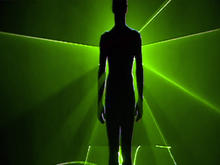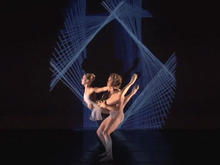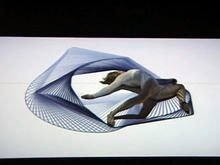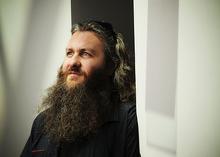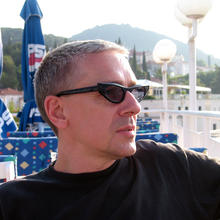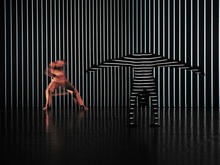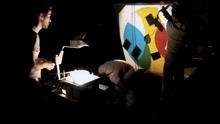Frieder Weiss
(*1960) is an engineer in the arts and expert for realtime computing and interactive computer systems in performance art, living in Nürnberg and Berlin. He is the author of EyeCon and Kalypso, video motion sensing programs.
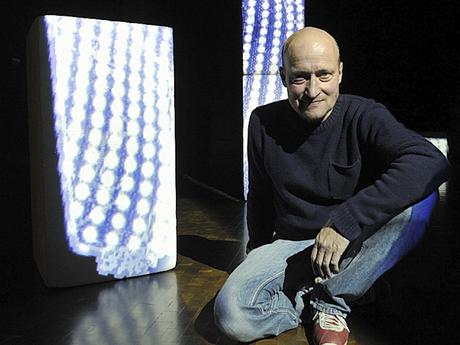
Frieder Weiss is the author of EyeCon and Kalypso, video motion sensing programs especially designed for use with dance, music and computer art. He works as commisioned developer, artistic colaborator or producer of own works.
With his background in computer science and automation technology he started developing interactive systems in 1993. For many years he was codirector of Palindrome Performance group, developing media performances which toured worldwide and have received numerous awards (Transmediale, Berlin; CynetArt Dresden). The early works were mostly focusing on movement to sound relationships. This was done using either bioelectrical sensor devices (Heartbeat, Muscle Tension, Touching Sensor, Brainwaves) or based on Video Motion Sensing (EyeCon software). Ongoing collaborations with Transmedia Akademie Hellerau and Phase-7 in Berlin.
Inspired by his work with Australian Dancer Emily Fernandez he started focusing on a tight integration of interactive visuals with the body in the Shadows performance and in the installation Schlamp. Frieder developed the video technologies and interactive stage projections for Chunky Move's recent intermedia works Glow and Mortal engine. For his contribution on Glow he was rewarded with a Green room award for Design in Dance. Both Pieces have been touring for many years now, including venues like BAM, New York, The Edinburgh Festival, The Sydney Opera house.
Other collaboration partners have been Leine und Roebana in Amsterdam, Laborgras in Berlin, Helga Pogatschar, Cesc Gelabert in Munich.
Current works are looking at ways to overcome the twodimensionality of video projections. Which led Frieder to an interest in sculptural works, using dance as material for threedimensional images of 'frozen' movement.
Event and clubing versions of the interactive visuals are marketed under the label Hypecycle. Frieder is also continuing his freelance work for the industry, mostly in the field of quality inspection and automation. He has been teaching mediatechnology at the University of Applied Sciences in Nürnberg and the University Centre in Doncaster, UK and at Hochschule für Gestaltung, Karlsruhe
Source: Frieder Weiss
